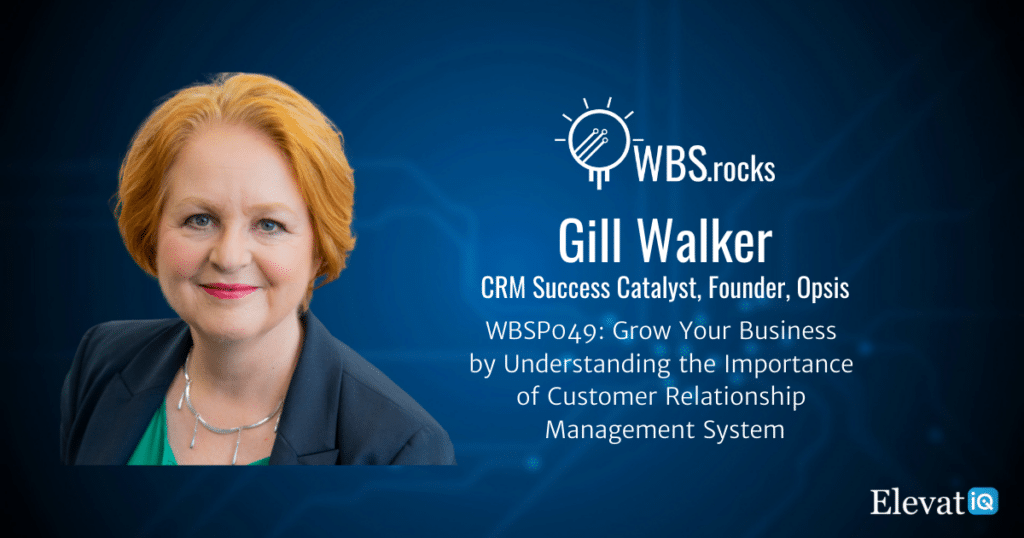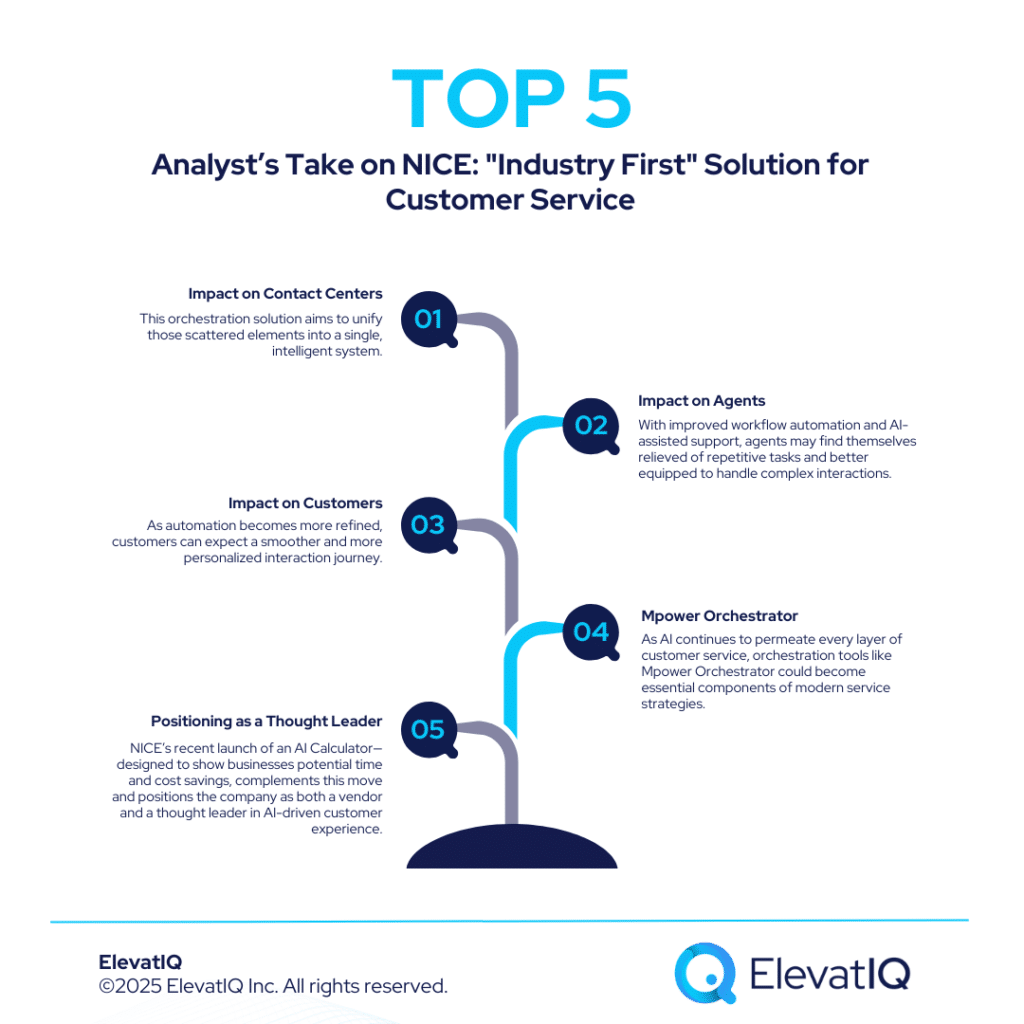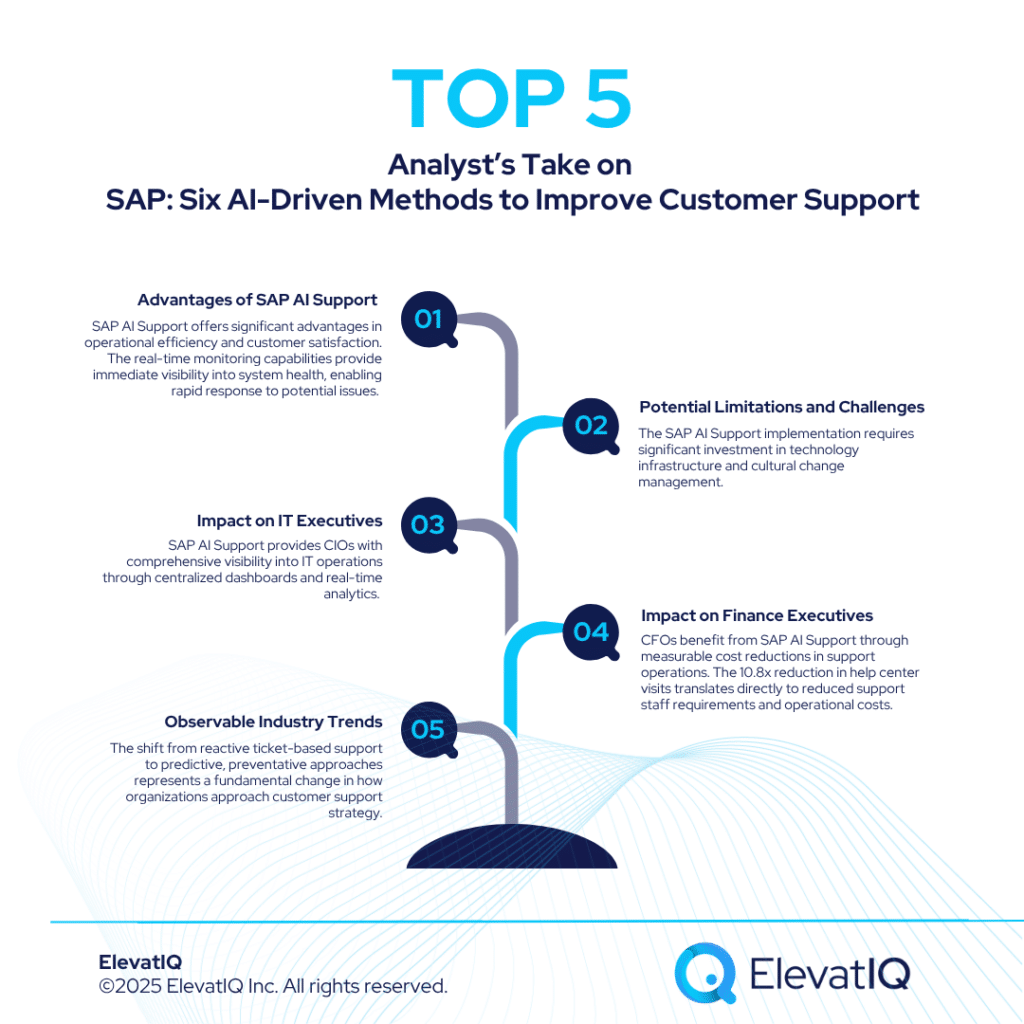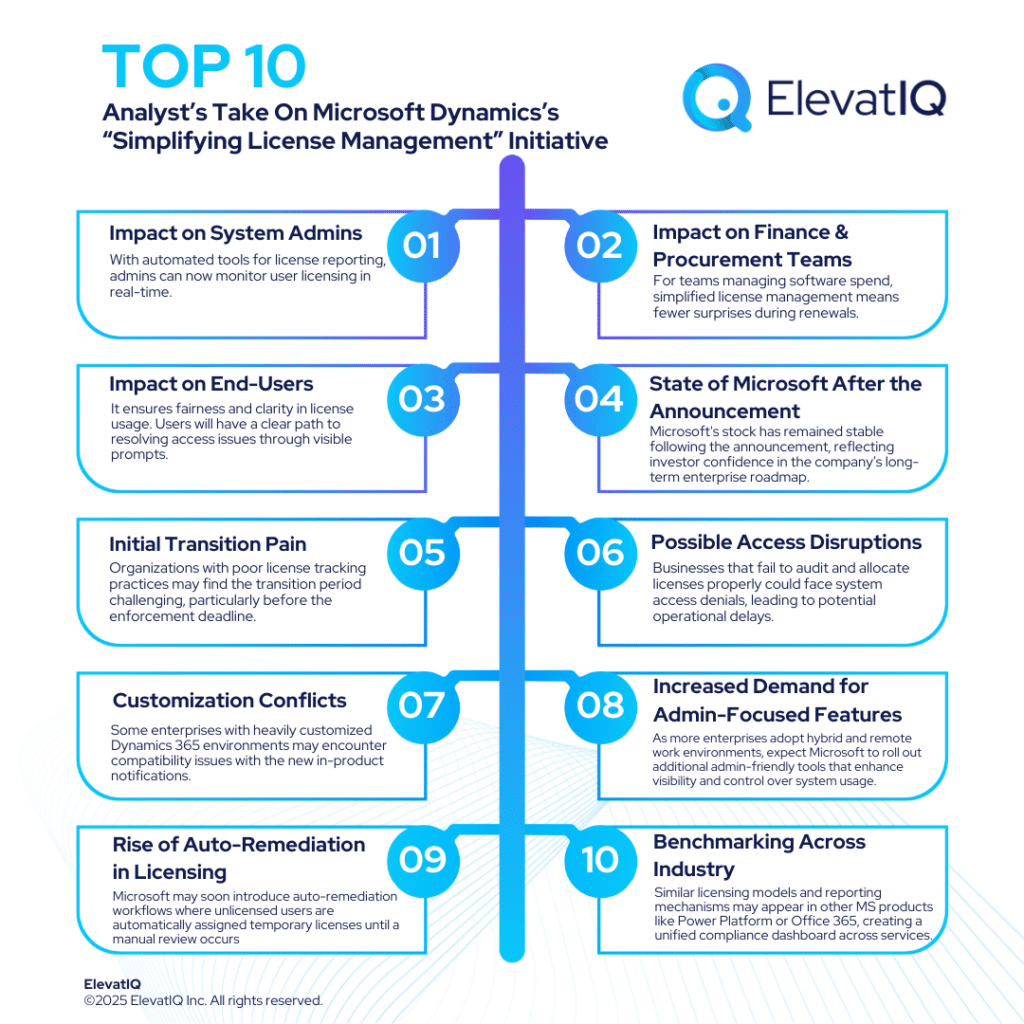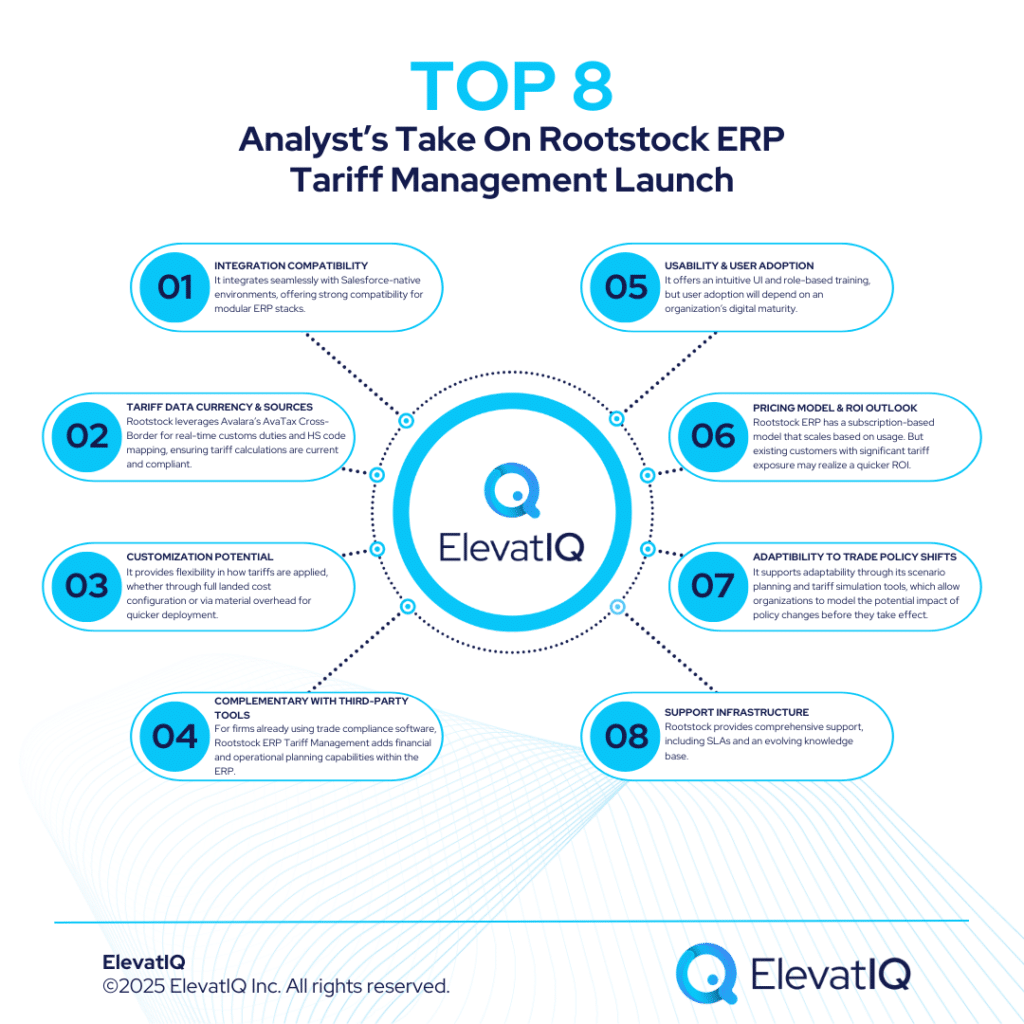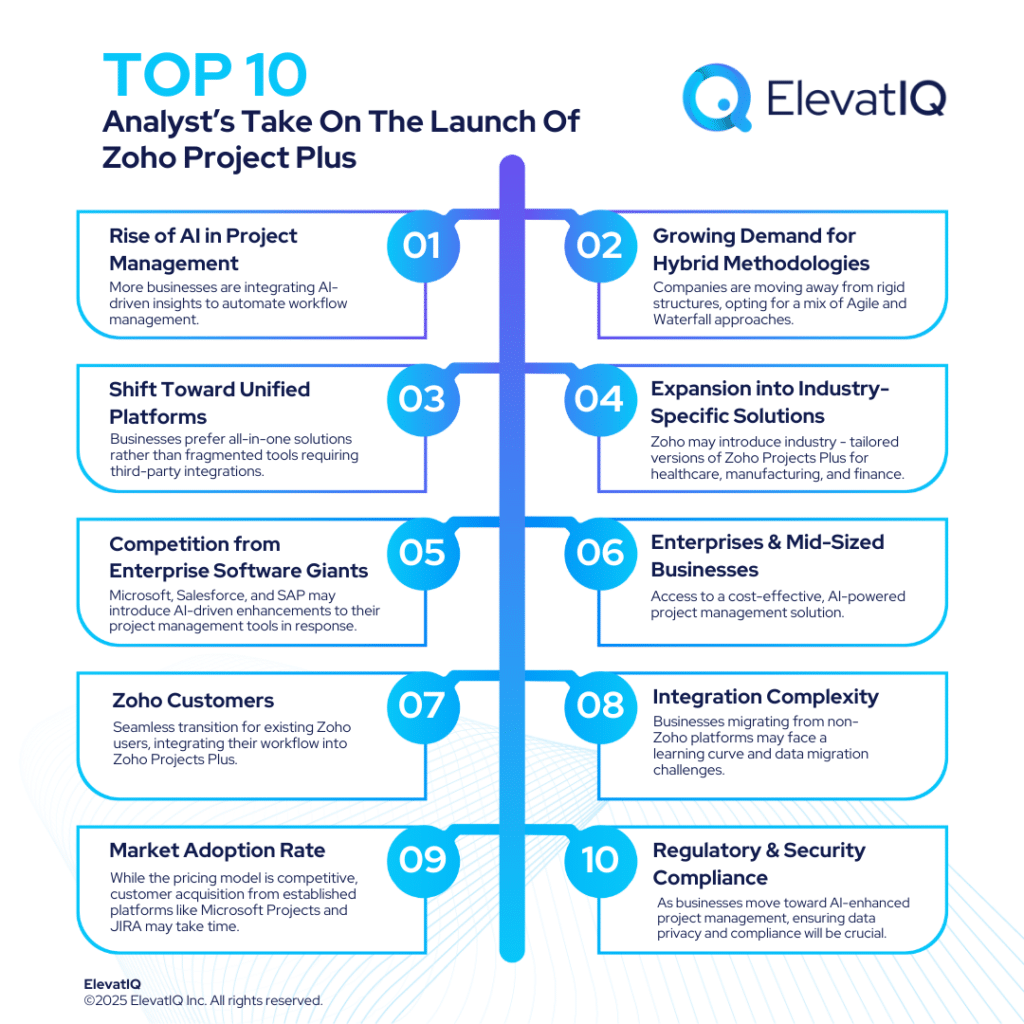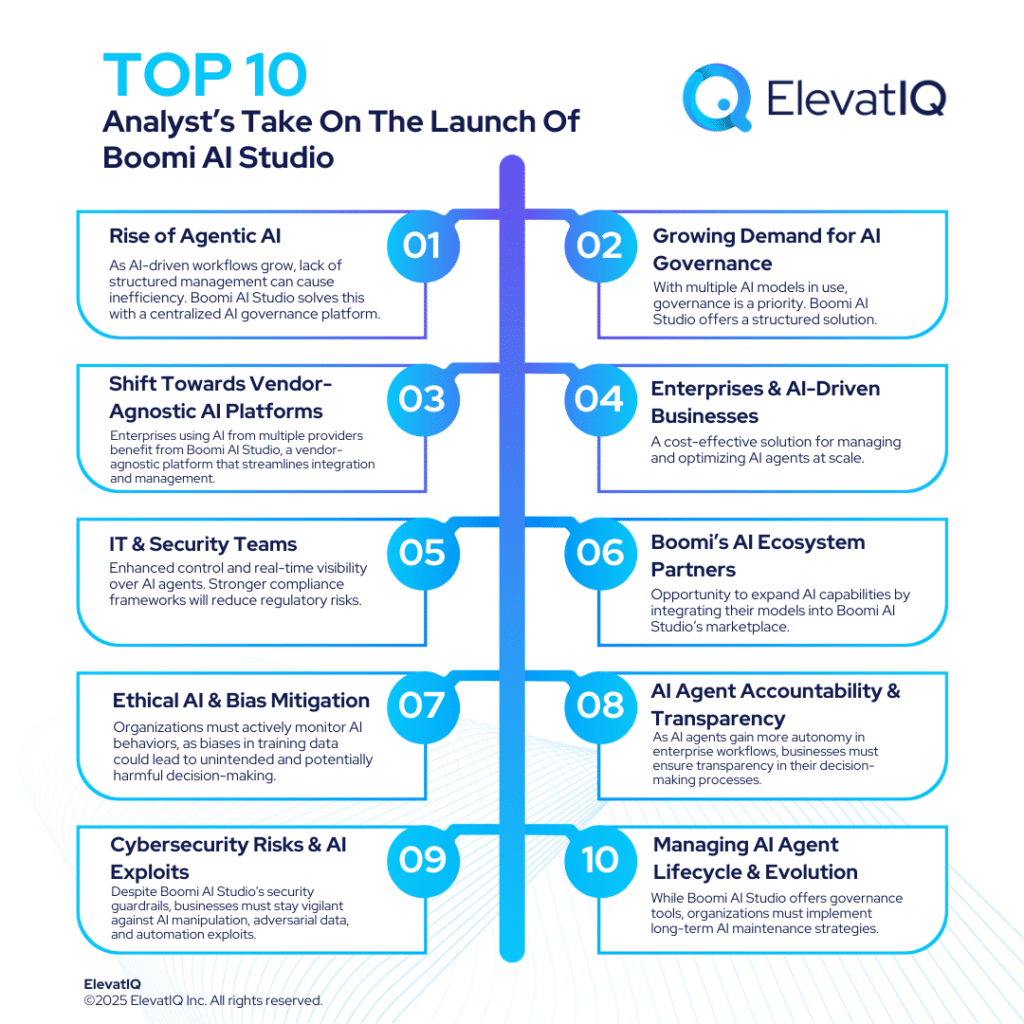Last Updated on November 27, 2023 by Sam Gupta
In this episode, we have our guest Gill Walker, who discusses the overlap of CRM vs ERP and how they fit among other systems such as E-commerce. He also shares several best practices for executives embarking on a CRM implementation journey. Finally, she shares several stories about the poor implementation she has seen and the lesson learned from them.
Chapter Markers
- [0:18] Intro
- [2:53] Personal journey and current focus
- [5:09] Perspective on growth
- [7:29] The difference in CRM vs ERP needs for a product vs. service industries
- [5:09] The role of CRM vs ERP, and E-commerce systems
- [15:42] The customer hierarchy in CRM vs ERP, and E-commerce systems
- [19:01] CRM functionality list
- [22:42] How to take advantage of a marketing automation system?
- [25:40] CRM implementation stories
- [33:54] Closing thoughts
- [35:02] Outro
Key Takeaways
- If you select technologies that are known to work well together, it is going to be a lot easier than if you just get a good CRM and a good ERP that are not working well together.
- One area of education that I think is very, very important is that everybody inside the organization who is going to be involved in key decisions should understand the functionality of the technology that they’ve invested in.
- Even though you as a CFO, CIO, COO, may not be as involved with your CRM implementation, be entering leads, entering customers, creating email templates, adding products, and a million other things, it is worth investing the time to have that education, when you do that stuff, purely to cement it so that then you can have those conversations about the implementation.

Subscribe and Review
Apple | Spotify | Stitcher | Google Podcasts | Deezer | Player FM | Castbox
About Gill
Gill Walker is “Your CRM Success Catalyst. She has been helping clients achieve success – better return on effort and better return on investment – with CRM for almost three decades, and for the past seventeen years she has focussed on Microsoft Dynamics 365. She is a Microsoft Certified Solution Architect and Microsoft Certified Trainer. Listen to Gill as she explains her philosophy of avoiding project calamity with education.
Resources
Full Transcript
Gill Walker 0:00
And that might have happened because somebody who we thought we could trust said it wasn’t necessary. And even that deserves a why is an implementation partner telling you that this broader education is not necessary.
Intro 0:18
Growing a business requires a holistic approach that extends beyond sales and marketing. This approach needs alignment among people, processes, and technologies. So if you’re a business owner, operations, or finance leader looking to learn growth strategies from your peers and competitors, you’re tuned into the right podcast. Welcome to the WBS podcast, where scalable growth using business systems is our number one priority. Now, here is your host, Sam Gupta.
Sam Gupta 0:55
Hey everyone, welcome back to another episode of The WBS podcast. I’m Sam Gupta, your host and principal consultant at digital transformation consulting firm ElevatIQ.
As your company grows, you might feel the need for software as you encounter each problem. The software landscape is hard to navigate. And if you don’t understand the role each system such as CRM vs ERP systems play, you could create an extremely patchy architecture which typically results in significant admin overhead and conflicts among teams causing your growth to slow down.
In today’s episode, we have our guest, Gill Walker, who discusses why CRM vs ERP distinction is important, and how that fits among other systems, such as e-commerce. She also shares several best practices for executives embarking on a CRM implementation journey. Finally, she shares several stories about the board implementation she has seen and the lessons learned from them. Let me introduce Gill to you.
Sam Gupta 1:53
Gill Walker is your CRM success catalyst. She has been helping clients achieve success, better return on effort, and better return on investment with CRM for almost three decades. And for the past 17 years. She has focused on Microsoft Dynamics 365. She’s a Microsoft Certified solution architect and Microsoft certified trainer. Listen to Gill as she explains her philosophy of avoiding project calamity. With that, let’s get to the conversation. Hey, Gill, welcome to the show.
Gill Walker 2:26
Thank you, Sam. It is awesome to be here from sunny Queensland all the way to freezing Toronto.
Sam Gupta 2:32
Okay, amazing. So this is not the first time we have had somebody from Australia, even though we are in North America. So I’m super excited to have this conversation.
Gill Walker 2:41
Of course, it’s not the first time you’ve had people from Australia. There are so many good people over here. But that’s because we’ve got so many good people.
Sam Gupta 2:53
Yeah, whenever I’m bored, I’m actually bringing a lot more people from Australia. Okay, so here’s what we are going to do today. So just to kick things off, do you want to cover your personal story and your current focus?
Gill Walker 3:03
Sure, I am your CRM success catalyst. And what that means is I work with you to get a better return on effort and better return on investment for your CRM project. And I do that by unpacking the mystery of CRM success. I’ve been in the CRM space now for about 30 years. And like many of the people I meet in this area is happened by accident. I morphed from teaching to consulting to IT training and back then to consulting, specifically in the CRM space.
And for the last nearly two decades, I’ve been working almost exclusively with Microsoft CRM, Microsoft Dynamics 365. And now, of course, power platform, my main point of difference is I help you understand your technology from bottom to top, whether you’re an end-user, an executive, wanting to get the best of the implementation, or anything in between, the more you understand of the technology and the processes that need to be involved, the more successful your project will be.
So that is my mantra. Educate, educate, educate.
I now live in Australia, in Sydney, moved here 20 years ago when I was headhunted for a role helping a CRM company that now no longer exists because of the mergers and acquisitions that occurred in this space in the first decade of this century. And I now live in a suburb in Northern Sydney. I live with my husband, no pets, no children at home, we generally have a pretty good life, and as you know, Sam, I am also a Toastmaster. I joined Toastmasters seven years ago, eight years ago, and achieved my distinguished Toastmaster earlier this year.
Sam Gupta 5:09
Okay, that’s amazing. I always enjoy talking to Toastmasters because we get a lot more stories. So today, we are going to be covering a lot more stories from your work perspective. But before we do that, we have one standard question here, which is going to be your perspective on growth do What does growth mean to you?
Gill Walker 5:30
It means making more profit so that the company is more successful. But of course, there are five things that you need to do to make more profit. You can get more leads into the business of those leads. You can convert more of those leads into initial opportunities and ultimately into customers. Once you’ve got those customers, you can increase the frequency that they buy from you, and you can increase the size of every purchase they make from you. And finally, of course, you can increase the profit of each of those sales. And a CRM can help you do all five of those.
What is particularly interesting is that while a 10% increase sounds eminently achievable, and for most people, it is, if you focus on achieving 10% more leads, and 10% more conversions, and 10%, more sales, 10%, bigger sales, and 10%, bigger profit, you don’t achieve 10% overall, you don’t achieve 50% overall, you actually achieve 61% more profit.
And that is one of the reasons why you should get your CRM to be fully rounded, why you should not only do marketing with it, not only do sales, make sure that those existing customers are kept happy. So they come back and back and back and back and eventually become raving advocates of your organization. And maybe even to the point that they’re almost as good as your salespeople, and you don’t have to pay for them.
Sam Gupta 7:29
Okay, so the organizations that we work with, typically and or my vision that is listening to this podcast, are going to be slightly more manufacturing, distribution, and retail-centric organizations. So these companies are not scrum-heavy. Their processes typically start with, let’s say, the order because let’s talk about the distribution or the retail organization. Right? So they are going to be starting from the order and not from the lead. So have you seen the application of CRM in the manufacturing, distribution, and retail verticals?
Gill Walker 8:07
I have, and one of our long-term clients did exactly as you’re suggesting Sam, so their CRM did start specifically from the order. And they were working then from the order through to the invoice, and we were able to do some fairly clever stuff. So they had one invoice document containing multiple of the actual invoices that were raised in CRM.
But even in that instance, there are opportunities for you to look earlier in the sales cycle and use that to a degree to keep topping up your customers. Because as we know, there are very, very few organizations in this world that have no competitors. If you have competitors, you are going to lose some of those customers. And you, therefore, do need to keep replacing them. And that requires some sales effort.
Sam Gupta 9:07
Okay, so how would you define, let’s say, you know, typically, manufacturing and distribution organizations have some sort of ERP because they need to do product costing, their accounting is going to be slightly more involved, their operations are going to be involved from the planning perspective as well.
So for them, obviously, the ERP is going to be slightly more important. So how would you draw the boundary between these two systems? They’re probably going to have a third system, which is going to be e-commerce, and e-commerce has its own way of tracking, let’s say, the customers.
Sam Gupta 9:39
So let’s say if you are in a manufacturing, distribution, or retail organization, where you have to have these three systems because they have their own roles and responsibilities, and they have their own way of doing things. Now, if you try to get customers and three different systems, you can imagine how bad the problem is going to be.
If so, how would you design the architecture for a company that has to have some sort of ERP because you cannot put this functionality, the functionality that belongs to CRM vs ERP, and the functionality that belongs to, let’s say, ecommerce in CRM either? So what will be the ideal architecture recommendation from your side if you were to recommend manufacturing, distribution, or retail company,
Gill Walker 10:23
it will vary depending on the business and how they operate. But given that we don’t have this level of detail in our hypothetical company, yeah, in general, the approach that I try to take is something that I call WORM, and what WORM is when we’re looking at WORM. That is, Write Once Read Many, so what we are trying to do within the system as a whole, and I agree totally with you, Sam. This is a system that comprises e-commerce, ERP, and of course, CRM.
But across that three systems, we’re trying to apply the right ones read many principles. So we need to make sure that certainly all of the data, specifically the customer data, but not only the customer data, as relevant is synchronized. So as you said a moment ago, we only want to enter those customers and that those customer details once in general, the customer details will get entered into the CRM system, because that is the first contact with our hypothetical organization will be before back about to be a customer is a customer because that organization is probably weighing up your organization with a couple of others, which is the best organization for them partner with obviously, we hope it’s you, but they may decide otherwise.
Gill Walker 12:03
So at that first level of interaction, we should be capturing as much of that general the company name, their address, that general background information should get captured in CRM, and then should flow from CRM through probably to ERP. And finally, on to e-commerce. But the will, of course, variations of that another point of contact between those systems is the orders.
So once this organization becomes a customer, they will be placing orders, and they will be placing lots of orders, maybe multiple per day, certainly several per month. Usually, we then need to look and think at what point does the information need to flow into an ERP, and again, keeping things very, very general, we can have that information flowing up the quote level at the order level. And at the invoice level, I would guess that for most organizations using ERP, the data is going to flow across at either the quote or maybe the order option. But occasionally invoice is the better option.
Gill Walker 13:18
And then, we need to think about what data needs to flow back to the CRM. Is it beneficial for the sales team to have visibility of invoices raised, the payment history of the customer, the products that they those customers buy, the frequency that they buy, and all of those other questions? And if it is relevant, does it make sense both from a usability and a cost perspective for that information to be made available to them inside the CRM system, rather than asking them to go to the ERP system.
So if those salespeople are comfortable using their CRM system, taking that data back from the ERP or the e-commerce system into CRM, quite possibly read-only, also makes a lot of sense. So salespeople, from a usability perspective, are only using CRM. They do not have to flick between CRM vs ERP, and e-commerce. So their life is made easier. And from a financial perspective, there may also be a benefit because you may well save on licenses for the ERP and the e-commerce solutions. Keep those so that at a user level. They are the only people who do need to interact with that data and update it, and so on. People who would use CRM feel they have the data but give it to them via the tool that they use all day and every day.
Sam Gupta 14:56
Yeah, that’s a very interesting perspective. And in fact, I would like to dig a little deeper into the customer definition. Because from the finance perspective, if you think about it, the customer is going to be slightly different. And what CRM cares for is going to be slightly different information.
For example, in the case of CRM, you guys are going to care for more of the psychographic information. And I think you already mentioned that they address the buying habits and interactions, so anything and everything that actually helps you in finding out, okay, how can I find other customers that are going to be similar to this customer? That’s what CRM is in my mind.
Sam Gupta 15:42
And with the ERP perspective, the customer hierarchy is going to be very different. His ERP does not care for as much of the psychographic data. What it cares for is it care for the bank account. It keeps all the financial details. It also cares for the hierarchy in terms of where the product is going to be shipped, who is going to be billed. So the customer hierarchy that you are going to see in the case of your ERP system may be completely different from your CRM system.
And by the way, if we expose all of this data, let’s say a field, people want to look at the invoice, or they want to process the order in the CRM, then they would probably need the pricing data, they would need the product data. Right? Then we are trying to replicate pretty much everything that exists in any ERP, which becomes a very difficult job because of keeping this data in two different systems. So as you mentioned, your philosophy is right. Read multiple times. But it’s easier said than done. So how would you approach the customer hierarchy?
Gill Walker 16:45
I made it sound very simple when I went through WORM. I agree with you. Yeah, but the other thing, and it does, of course, the answer, the detailed answer that we came to with any particular client or any particular implementation, will, of course, vary on the particular technologies that they have selected.
And if you select technologies that are known to work well together, and that would certainly be my recommendation, it is going to be a lot easier than if you just get a good CRM and a good ERP that are not working well together. However, we don’t necessarily need to take everything back. So with products, for example, we probably if there is an ERP, in place of the net in the way that you discussed a moment ago, Sam, yep, we probably could take the product, but we don’t need all of the product catalogs.
So it’s just enough to make the order make sense. If that level of detail is necessary, we may choose just to take the value of the order. So we might take the order information but not worry about the line item information that would give our CRM users the frequency and the value of the order, but not worry about the details. So that might be a solution. That works great.
Sam Gupta 18:17
But I mean, if they are getting the orders in the CRM system, they will need to know the line item details as well. In fact, then CRM is going to be the driver to create the orders.
Gill Walker 18:31
Maybe we don’t go that far. Maybe we stopped before they created the order. I think it is one of those that we could do in so many different ways. It would be wrong to say you must do it this way until we’ve got a lot more information about the particular implementation. At this level, let’s keep it up. We could move the data through at any one of the sales stages.
Sam Gupta 19:01
Yep. So when we come across these implementations, typically, we come across two different scenarios. Obviously, CRM plays a very important role. There is no question that the functionality that CRM is going to have is most likely not going to be available in ERP and your ecommerce system because CRM is designed for a purpose. It is designed to do a lot more things from the customer’s perspective.
If ERP systems try to do that, then they are simply overlapping CRM systems. That’s not the intent of all of these systems. They all have their own places. So some of the specific functionality from the CRM system that you have seen is commonly not available in other systems that are designed to make the CRM process slightly simpler. They are not for complex CRM organizations.
So tell us some functionality that you have seen in your CRM implementation, which is not going to be available in the case of an ERP, and these companies would probably require a sophisticated CRM system.
Gill Walker 20:05
Where we go-to for that is looking at the beginning of the sales process. So we’re possibly into marketing automation, which is, of course, another whole system the sales organization may well need. How do we get people from the world out there? How do they, first of all, establish that they have a problem that we as an organization can solve? Secondly, how do they then know that we exist and could solve that problem? All of that is covered off by marketing, and marketing, if we don’t have marketing automation in place can become very, very, very expensive.
So having an overall system where the prospects are doing some of the work for themselves, they’re finding your website, from the website, they’re getting a very good understanding of the services you offer, the problems that you solve, they are then entering some data. And whether that’s because they’re making a simple inquiry, they’re downloading something, or even placing an order. They are doing the work. And then marketing automation takes that into the CRM solution.
Gill Walker 21:27
And then, if there is an order in there, passing that through to ERP, even though it might go straight through CRM, that is probably a simpler overall solution than trying to integrate the website directly to ERP. But there are always options. And then, with marketing automation, we can also see how effective our marketing is. So, how effective are both the website and individual pages on the website? How effective are particular campaigns, and knowing the effectiveness of anything like this does, of course, then mean that you can do more of the good stuff and not waste time, money, and effort on doing the stuff that you that doesn’t work?
Anyway, I’m sure many of the listeners will be familiar with the phrase, I know that 50% of my marketing budget is working, but I don’t know which 50% of that is. I am so getting that whole flow from the very, very early interaction of a prospect. And then all the way through is so important.
Sam Gupta 22:42
Typically, in our listener base and the audiences well, the majority of the organizations are going to be slightly more sales driven. So the way they acquire leads and the way they acquire their customers is going to be from the tradeshow. So let’s say if they are not utilizing the marketing automation at this point in time, what would be your recommendation in starting on this journey, number one, and how we can take advantage of marketing automation initiatives to increase the effectiveness of their marketing, as well as sales.
Gill Walker 23:17
So if we look at the whole trade show scenario, you’ve invested the money and the time of people for somewhere between a day and a week to go to this trade show. And we want to get the maximum possible return from that. So we want to get back data of everybody that expresses an interest in the system.
And we’ll probably do that by a range of different methods, we may well have some form of business card collecting vessel on the stand, and any cards that are then dropped into AP business card, whether they that business card container, whether they do it because they really want to talk to a sales rep, or whether they are just interested in the free bottle of whiskey or whatever.
Let’s not worry about that for the moment. What we then want is a business card scanner that can get the relevant data from those cards into the relevant fields in CRM. And then once they’re created, we want an automated email probably going out that thanks them for dropping by the stand and how can we help further depending on the particular scenario in place.
Gill Walker 24:38
Another alternative is to have a tablet of some description. So prospects themselves enter their own name and address and company and inquiry reason into that tablet under course that tablet then takes the information directly into CRM and has the appropriate order. Follow on from it.
And the third possible option is that your staff members on the stand enter the data, possibly using the same tablet application, possibly using a different direct CRM application. But all of those want to then be following up it as soon as possible with automated communications, getting to the point where, where relevant, and we need to have something in that whole process that estimates the relevance where we can get an appointment between a salesperson and a prospect.
Sam Gupta 25:40
Okay, so obviously, you see a lot of different CRM projects, and you talk about CRM project management as well. So from your experience, can you share some of the stories where the CRM implementation did not go as well as you would like?
So, for example, in my mind, the CRM project of any project, for that matter, is an art. Okay? And it’s really up to the artist how they want to draw it. So sometimes it goes. Well, sometimes it does not. So what I’m really interested in knowing is when it did not go well, and what are the mistakes that you have seen. And if you have any lessons learned from these stories.
Gill Walker 26:23
I could talk on that point for days. Let’s think of a couple of useful ideas and lessons that we can then broaden out. I think, for the purposes of this conversation, I’m going to focus on CRM as a discrete and worry a little bit less about the ERP and e-commerce that may or may not be in place.
But if we generalize, where do I see problems? One of the biggest problems that I see is when people make design decisions. And the design of the CRM itself doesn’t understand the technology that they have invested in. So I remember one instance, probably ten years ago now, where I came to know a client who absolutely insisted that we created a custom entity, a custom table in the system for suppliers, and in the CRM that was selected that is not appropriate.
Gill Walker 27:35
And it’s not a good idea. Because suppliers are just one group of organizations with whom you have a business relationship. And that data of organizations with whom you have a business relationship should all be held in accounts, but they’ve got this warped idea that an account had to be an existing customer.
And that is not true. It is a much bigger group than that, although we hope that many of them will become customers. So this client asked me, first of all, to create the custom entity. And then, of course, the custom entity didn’t have all the functionality that the account entity had in the system.
So they wanted us to add this and this and this so that we could email from it and do this and do that and do the other. And it just didn’t work. And if the client had just been prepared to take their suppliers, put them into the account, differentiate them with a flag, which then allows you to see only suppliers, or accounts that aren’t suppliers, and so on. Everything would have been better.
So that’s certainly one area I have also seen people have. In fact, I’m helping a client now, where the entire sales process has been put into the lead entity. So this is using Microsoft Dynamics, and we have got 400 custom fields.
Gill Walker 29:11
It is so bad. I am engaged for is to unwind that and split that lead across the lead opportunity, quote, product, product line, contact, and account. And we’ve got a few other problems, but that’s the major one. And I am going back to my earlier example of failing to understand the technology.
I worked with a CIO last year, and I honestly believe that he thought any problem in CRM could be solved by adding another field or another couple of forms. It’s a completely different organization different project follows On nicely from our friends with their 400 custom fields on the lead.
So rolling those three stories into one, my advice to anybody, even a CIO or CFO, CIO, who is leading championing a CRM project into their organization, is to be prepared to invest both financially and timewise in education. And this brings me to another point that, for me is really important that education is way more than end-user training.
End-user training is, without a shadow of a doubt, hugely important and must be part of your project if your project is to be successful. That, again, is a topic I could talk about till Christmas. The only education that we should have in the project. And one area of education that I think is very, very important is that everybody inside the organization who is going to be involved in key decisions should understand the functionality of the technology that they’ve invested in.
Gill Walker 31:14
And that education is not going to be weeks and weeks and weeks of training, although it should be fairly hands-on because as anyone who’s been in the education space will tell you anything that you learn, you learn far more effectively when you practice it at a practical level.
So even though you as a CFO, CIO, COO, may probably will not in your CRM implementation, be entering leads, entering customers, creating email templates, adding products, and a million other things, it is worth investing the time to have that education, when you do that stuff, purely to cement it so that then you can have those conversations about the implementation.
You can make the right decisions for the design and not get yourself into the sort of pickles that I’ve highlighted in the last few minutes. And while I’ve only focused on three of those projects, I’ve worked on more than three projects in the last 20-25 years that I’ve been in this space. And I could, as I said, talk for a lot longer and a lot more samples.
Gill Walker 32:36
But one of the things that I feel when I look at projects that have gone wrong, and the failure rate is horribly high, is upwards of 60%. And some things that you read have it even as high as 85%. When we drill into the reason behind those failures, I think nine times out of 10, the root cause may be not the visible cause, but the root cause of failure is a lack of understanding, which in turn has come from a lack of education. I think of it as all roads lead to Rome.
So all of those reasons for project failure. When do you ask why did that happen? Why did that happen? Why did that happen? The answer to the final question will be we didn’t invest, or we didn’t prioritize the understanding of the technology that we were taking on. And that might have happened because somebody who we thought we could trust said it wasn’t necessary. And even that deserves a why is an implementation partner telling you that this broader education and understanding isn’t necessary?
Sam Gupta 33:54
Okay, Gill, this was a very insightful conversation. Do you have any last-minute closing thoughts, by any chance?
Gill Walker 33:59
I think my closing comment has to be the education piece through that education, and really do it. There’s a lot more to doing education than just signing up for a course signing up. So part of it, but obviously, you need to go along to the course, or it may well be virtual in the current world.
And of course, when you’re in the course, you do need to do it, not spend the day or however long it is on your phone nipping out doing emails, whatever else you may be doing, engage with that course take on board the education and then apply it to your project in conversations about the design, about the implementation.
Sam Gupta 34:43
Great, amazing thoughts there. My personal takeaway from this conversation is going to be there are two critical aspects of any project success. And that is going to be the number one education of your core team. And the second is going to be end-user training. On that note, Gill, I wanted to thank you for your time and your insight.
Sam Gupta 35:02
I cannot thank our guests enough for coming on the show for sharing their knowledge and journey. I always pick up learnings from our guests, and hopefully, you learned something new today. If you want to learn more about Gill, head over to obsess.com.au. Links and more information will also be available in the show notes.
If anything in this podcast resonated with you and your business, you might want to check other related episodes, including the interview with Jeff White, who discusses why it is so important to identify the ideal customer profile for your offerings to streamline your growth. Also, the interview with Chris Grainger, who discusses why his company EECO, a large electrical distributor, needed to change the way they sold to their customers.
Also, don’t forget to subscribe and spread the word among folks with similar backgrounds. If you have any questions or comments about the show, please review and rate us on your favorite podcasting platform or DM me on any social channels. I’ll try my best to respond personally and make sure you get help. Thank you, and I hope to get you on the next episode.
Outro 36:08
Thank you for listening to another episode of the WBS podcast. Be sure to subscribe on your favorite podcasting platform, so you never miss an episode. For more information on growth strategies for SMBs using ERP and digital transformation, check out our community at wbs.rocks. We’ll see you next time.


